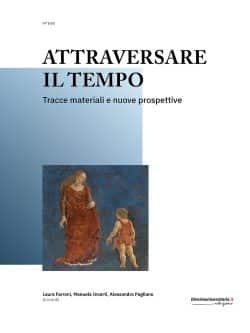Descrizione
“This book is not a dusty compendium but a virtuoso performance. It is truly outstanding on account of its comprehensive coverage of the field, the depth of its analysis, the lucidity of its presentation, and the sheer sense of fun that is conveyed by many of its pages […]. It deserves to be read by every textual scholar” (Dániel Kiss, Exemplaria Classica, 20, 2016).
“A new book came out last October that I think deserves the attention of NT text critics, especially those working on all things stemmatic […]. Written with verve but also with a thorough knowledge of the subject, it should serve beginning students and seasoned scholars admirably” (Peter J. Gurry, http://evangelicaltextualcriticism.blogspot.it/2015/6/).
“This volume is a didactic tool and at the same time a passionate and combative pamphlet; it speaks to students and colleagues at the same time and with the same stance” (Nicola Morato, French Studies, 2015).
“A scholar said that before entering into an edition, one should first read Maas and Pasquali. This is a very good idea, but I think that Trovato’s book will do perhaps equally well. There is a clear presentation of problems, illustrated by a wealth of examples, there is fairness towards those who cherish another view, bringing forward what is good in what is considered mistaken. This is scholarship on a high level” (Bengt Alexanderson, Augustinianum, 2016).
Paolo Trovato is a scholarly editor and book historian working on the field of medieval and Renaissance Italian literature. Professor of the History of the Italian language at the University of Ferrara since 1994, he was a Fellow at the Harvard Center for Italian Renaissance Studies (VIT) and at the Newberry Library, Chicago, as well as Visiting Professor in Aix-en-Provence and at the Hebrew University of Jerusalem.
His books include: Con ogni diligenza corretto. La stampa e le revisoni editoriali dei testi letterari italiani, 1470-1570 (il Mulino 1991, repr. UnifePress 2009); Storia della lingua italiana. Il primo Cinquecento (il Mulino, 1994, repr. libreriauniversitaria.it 2012); critical editions of Machiavelli’s Discorso intorno alla nostra lingua (Antenore 1982, repr. libreriauniversitaria.it. 2014) and Aretino’s Cortigiana (Salerno ed. 2009).
Since 2002 he has been leading a small team on a critical edition of Dante’s Commedia.
Table of contents
Foreword, by Michael D. Reeve
Preface
Acknowledgements
How to use this book
General bibliography
Introduction
1. Philology or textual criticism
2. We are all philologists
3. Why do we need textual criticism?
4. Who’s afraid of philology?
Part 1. Theories
1. “Lachmann’s method”
2. Bédier’s schism
3. A more in-depth look at some essential concepts
4. Highs and lows of computer-assisted stemmatics
5. The criticism of linguistic features in multiple-witness traditions
6. The ineluctability of critical judgment (choice out of variants, conjecture)
Part 2. Practical applications
7. A simple tradition. The Tractatus de locis et statu sancte terre jerosolimitane
8. A tradition of average difficulty. Jean Renart’s Lai de l’ombre
9. A very complicated tradition. Dante’s Commedia
Conclusion
Postface to the second edition
General index
List of passages discussed






